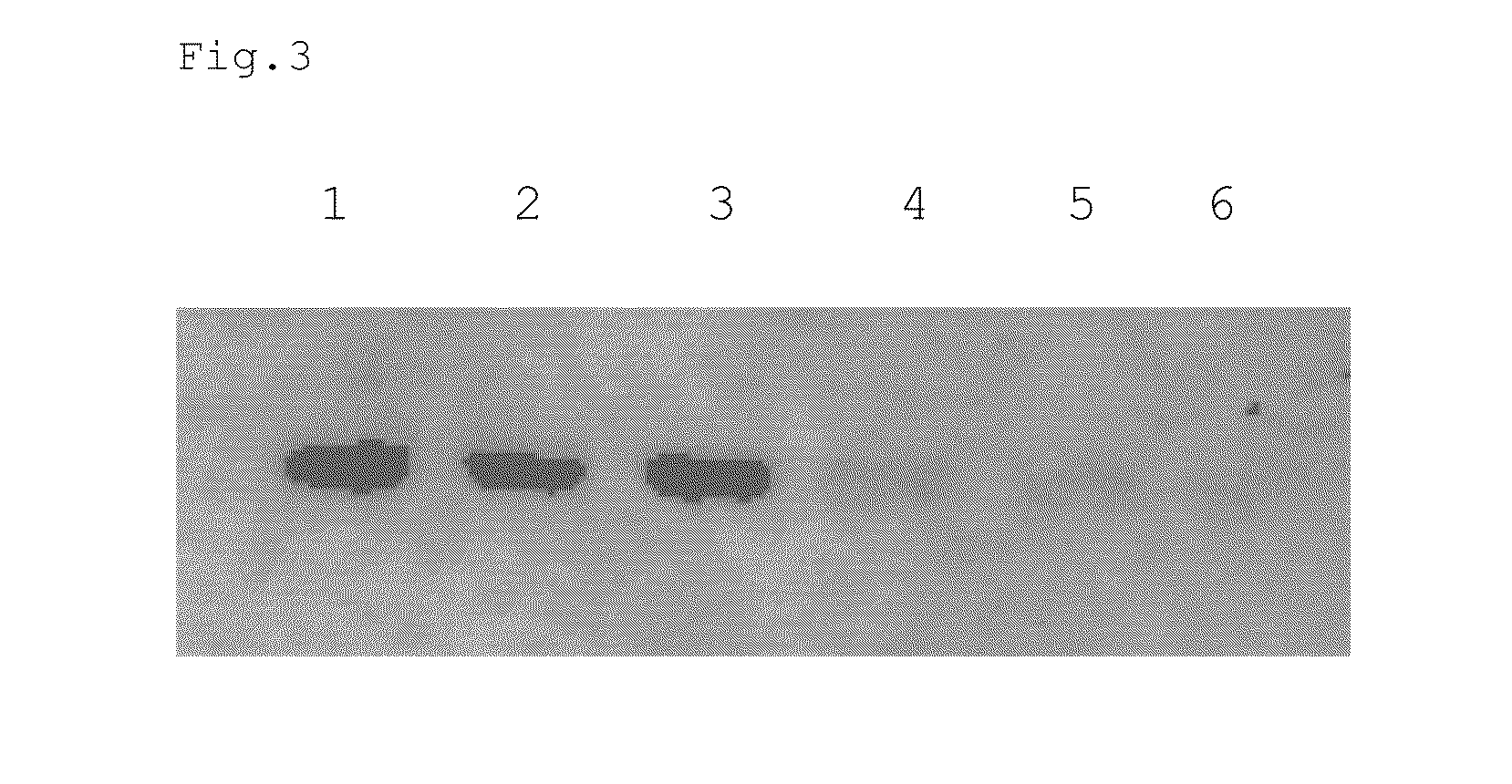FAD-conjugated glucose dehydrogenase gene
a technology of conjugated glucose and glucose, which is applied in the field of new pqq-conjugated glucose dehydrogenase, can solve the problems of low stability low activity of conventional pqq-conjugated glucose dehydrogenase, etc., and achieve excellent substrate (gluco
- Summary
- Abstract
- Description
- Claims
- Application Information
AI Technical Summary
Benefits of technology
Problems solved by technology
Method used
Image
Examples
example 1
(Cloning of Gene Presumed to be FAD-Conjugated Glucose Dehydrogenase Derived from Aspergillus oryzae NBRC 5375 Strain into Escherichia coli)
(1) Culture of Microbial Cells
[0092]A liquid culture medium containing 1% (w / v) glucose (manufactured by Nacalai Tesque), 2% (w / v) defatted soybean (manufactured by Showa Sangyo Co., Ltd.), 0.5% (w / v) corn steep liquor (manufactured by San-ei Sucrochemical Co., Ltd.), 0.1% (w / v) magnesium sulfate heptahydrate (manufactured by Nacalai Tesque), and water was adjusted to pH 6.0, and a 100 mL portion thereof was placed in a 500 mL Sakaguchi flask and autoclaved at 121° C. for 20 minutes. In the cooled liquid culture medium, Aspergillus oryzae NBRC 5375 strain was inoculated and subjected to shaking culture at 28° C. for 48 hours. Thereafter, the wet microbial cells (15.5 g) were collected using a centrifugal separator.
(2) Confirmation of Activity of FAD-Conjugated Glucose Dehydrogenase of Aspergillus oryzae NBRC 5375 Strain
[0093]The microbial cells ...
example 2
(Cloning of Gene Presumed to be FAD-Conjugated Glucose Dehydrogenase Derived from Aspergillus oryzae NBRC 5375 Strain into Aspergillus oryzae)
(1) Extraction of Chromosomal DNA
[0110]Among the wet microbial cells obtained in Example 1(1), a 0.25 g portion thereof was frozen in liquid nitrogen, and then homogenized, and a chromosomal DNA was extracted by a common procedure.
(2) Cloning of Gene Presumed to be FAD-Conjugated Glucose Dehydrogenase
[0111]As a host to be used, Aspergillus oryzae NS4 strain was used. This strain was bred in Brewery Laboratory in 1997 as described in a publicly known document 1 (Biosci. Biotech. Biochem., 61 (8), 1367-1369, 1997) and has been used in the analysis of transcription factors, the breeding of high-producing strains of various enzymes, and the like, and those for distribution are available.
[0112]For this strain, a modified amylase gene promoter derived from Aspergillus oryzae described in a publicly known document 2 (Development of the heterologous g...
example 3
(Confirmation of Gene Sequence)
(1) Sequence of Gene Presumed to be FAD-Conjugated Glucose Dehydrogenase Derived from Aspergillus oryzae NBRC 5375 Strain in Recombinant Escherichia coli
[0121]The sequence determination of the gene presumed to be an FAD-conjugated glucose dehydrogenase derived from Aspergillus oryzae NBRC 5375 strain in the recombinant Escherichia coli obtained in Example 1 was performed, and the result is shown in SEQ ID NO: 3. The sequence shown in SEQ ID NO: 3 was compared with a cDNA sequence obtained by removing the intron from the base sequence of the gene (AO090005000449) presumed to be an FAD-conjugated glucose dehydrogenase in Comparative example, and it was found that the sequence of ATG at positions 604 to 606 with the start base A of AO090005000449 counted as position 1 was different from that of the gene presumed to be an FAD-conjugated glucose dehydrogenase derived from Aspergillus oryzae NBRC 5375 strain which had the sequence of GCTGGTGTTCCATGGGTT repr...
PUM
| Property | Measurement | Unit |
|---|---|---|
| pH | aaaaa | aaaaa |
| molecular weight | aaaaa | aaaaa |
| Tm | aaaaa | aaaaa |
Abstract
Description
Claims
Application Information
 Login to View More
Login to View More - R&D
- Intellectual Property
- Life Sciences
- Materials
- Tech Scout
- Unparalleled Data Quality
- Higher Quality Content
- 60% Fewer Hallucinations
Browse by: Latest US Patents, China's latest patents, Technical Efficacy Thesaurus, Application Domain, Technology Topic, Popular Technical Reports.
© 2025 PatSnap. All rights reserved.Legal|Privacy policy|Modern Slavery Act Transparency Statement|Sitemap|About US| Contact US: help@patsnap.com


